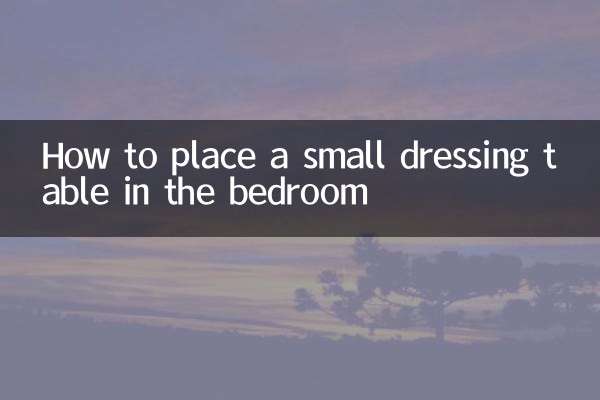How to design and use the inside of a wardrobe
In modern home design, the wardrobe is not only a tool for storing clothes, but also an important part of improving the quality of life. A well-designed wardrobe can maximize space utilization and make daily dressing more convenient. The following are practical suggestions and structured data on wardrobe design from hot topics on the Internet in the past 10 days to help you create a wardrobe that is both beautiful and practical.
1. Basic principles of wardrobe design

1.Clear partitioning: The interior of the wardrobe should be divided into a hanging area, a stacking area, a drawer area and an accessories area to ensure that all types of clothing are stored in an orderly manner.
2.Flexible adjustment: Adjustable shelves and hanging rods can adapt to storage needs in different seasons.
3.Humanized details: Such as lighting design, sliding mirrors, etc. to enhance the user experience.
2. Popular Wardrobe Design Trends
| design type | Features | Applicable people |
|---|---|---|
| walk-in closet | Independent space, large capacity and strong privacy | large family |
| Built-in wardrobe | Save space, flush with the wall, beautiful | small family |
| open wardrobe | Easy to take and good ventilation | Young people who pursue convenience |
3. Suggestions for optimizing the internal structure of the wardrobe
1.Hanging area: It is divided into long clothing area and short clothing area. The height of long clothing area is recommended to be ≥1.3 meters and that of short clothing area is ≥0.9 meters.
2.stacking area: The height of the shelf is recommended to be 30-40cm, suitable for folding clothes.
3.Drawer area: Used to store small items such as underwear and socks. The appropriate depth is 15-20cm.
4.Accessories area: Such as trouser racks, tie racks, etc., which can be customized according to needs.
4. Common problems and solutions in wardrobe design
| question | solution |
|---|---|
| Low space utilization | Add adjustable shelves to utilize vertical space |
| Inconvenient to get clothes | Use drop-down rails or rotating hangers |
| disorganized | Sort using bins or dividers |
5. Wardrobe materials and environmental protection choices
1.plate: It is recommended to use environmentally friendly E0 grade or F4 star boards, such as particle boards and multi-layer solid wood boards.
2.Hardware accessories: Choose well-known brands such as Hettich and Blum to ensure durability.
3.surface treatment: Easy-to-clean materials such as baking paint and UV boards are more suitable for daily use.
6. The rise of smart wardrobes
In recent years, smart wardrobes have become a hot topic. Smart wardrobes with dehumidification, sterilization, automatic lighting and other functions are especially suitable for humid areas in the south. Some high-end products also support APP control to facilitate clothing management.
7. DIY Wardrobe Design Tips
1. Use the space behind the door to install hooks or storage bags.
2. Install LED light strips under the shelves to improve the lighting effect.
3. Use hangers of the same color to make it visually tidier.
Summarize:A good wardrobe design needs to combine personal living habits, space size and budget. With reasonable zoning and detail optimization, even a small wardrobe can play a big role. Hopefully the structured data and practical advice in this article will help you create the wardrobe space of your dreams.

check the details

check the details